 |
Picture of many people on a boat from
https://pixabay.com/photos/boat-water-refugee-escape-asylum-998966/ |
This world history resource focuses on people and ideas
on the move from 2000 B.C. to 250 B.C.
and includes quiz questions and answers
along with video links to related topics.
I utilized World History: Patterns of Interaction (Holt McDougal)
for our world history textbook.
It has multiple options for different learning styles
and covers a wide array of information.
This quiz accompanies Chapter 3: pages 58-85.
Directions for the quiz:
- Scroll down and click on the thumbnail to enlarge to full screen.
- Click on the graphic to advance to the next screen.
- Choose an answer for each question.
- Compare your answers with those provided.
If you are interested in a group and/or interactive version of this quiz,
log in to Kahoot! and search for Week 3 World History by Katrena.
Below are videos to accompany chapter 3:
Thanks for visiting my StudentSurvive2Thrive blog.
Feel free to search for resources via the site map,
topics on the right or my search bar.
Here are a few more of my articles you may find
helpful this week:
 |
| World History Week 3: People and Ideas on the Move 2000 B.C. to 250 B.C. |
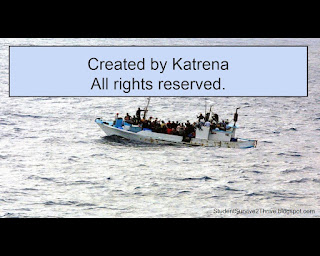 |
| Created by Katrena. All rights reserved. |
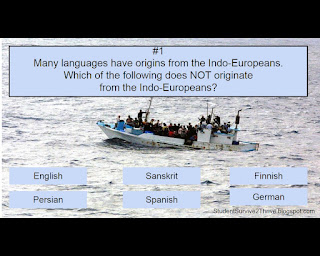 |
Many languages have origins from the Indo-Europeans.
Which of the following does NOT originate from the Indo-Europeans?
Answer choices include: English, Sanskrit, Finnish, Persian, Spanish, German |
 |
| The correct answer is Finnish. |
 |
When groups of people move from one region to another in order to make a new home,
this is called _____. Answer choices include: illusion, pilgrimage, vacation, migration |
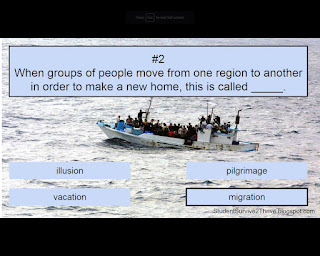 |
| The correct answer is migration. |
 |
The Hittites were the first to use ___ in weapons of war around 1500 B.C.
Answer choices include: bronze, silver, granite, iron |
 |
| The correct answer is iron. |
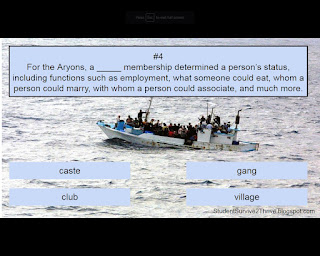 |
For the Aryons, a _____ membership determined
a person’s status, including functions such as employment,
what someone could eat, whom a person could marry,
with whom a person could associate, and much more.
Answer choices include: caste, gang, club, village |
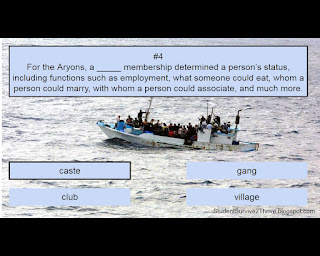 |
| The correct answer is caste. |
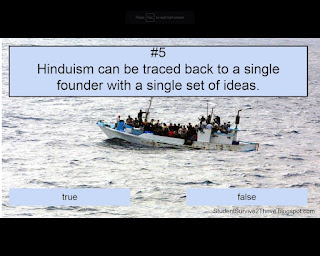 |
Hinduism can be traced back to a single founder with a single set of ideas.
Answer choices: true, false |
 |
| The correct answer is false. |
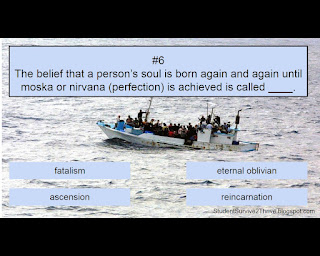 |
The belief that a person’s soul is born again and again until
moska or nirvana (perfection) is achieved is called ____.
Answer choices include: fatalism, eternal oblivion, ascension, reincarnation |
 |
| The correct answer is reincarnation. |
 |
Who was the founder of Buddhism and outlined four noble truths?
Answer choices include:
There is no founder of Buddhism, Siddhartha Gautama, Mahatma Gandhi, the prophet Muhammad |
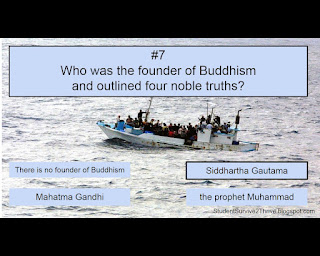 |
| The correct answer is Siddhartha Gautama |
 |
Buddhist monks and nuns of this time took vows of poverty, non-violence, and did not marry.
Answer choices include: true, false |
 |
| The correct answer is true. |
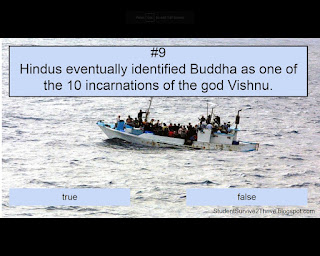 |
Hindus eventually identified Buddha as one of the 10 incarnations of the god Vishnu.
Answer choices include: true, false |
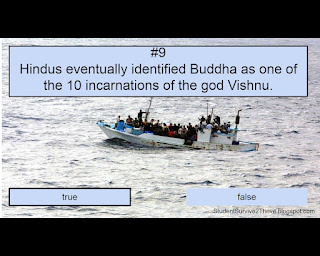 |
| The correct answer is true. |
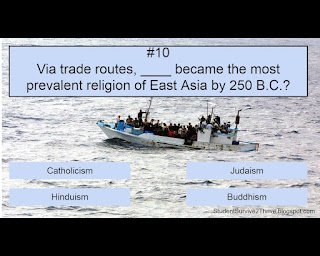 |
Via trade routes, ____ became the most prevalent religion of East Asia by 250 B.C.?
Answer choices include: Catholicism, Judaism, Hinduism, Buddhism |
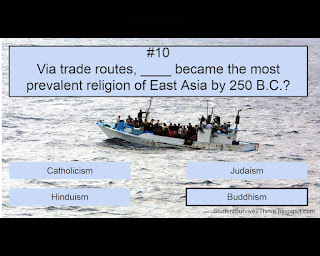 |
| The correct answer is Buddhism. |
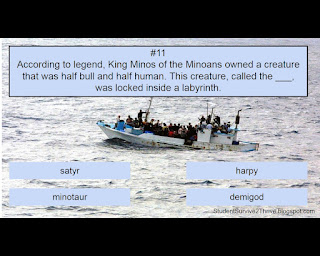 |
According to legend, King Minos of the Minoans owned a creature
that was half bull and half human.
This creature, called the ___, was locked inside a labyrinth.
Answer choices include: satyr, harpy, minotaur, demigod |
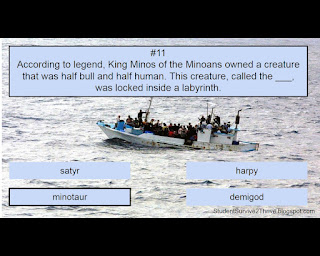 |
| The correct answer is minotaur. |
The ___ were the first people of the Mediterranean to sail beyond the Strait of Gibraltar,
a journey that would not be recorded again for another 2,000 years.
Answer choices include: Aryons, Phoenicians, Israelites, Monoans
 |
| The correct answer is Phoenicians. |
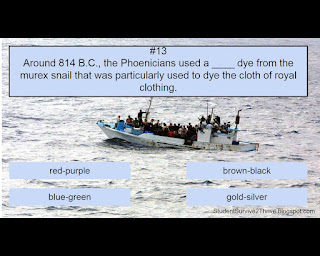 |
Around 814 B.C., the Phoenicians used a ____ dye from the murex snail
that was particularly used to dye the cloth of royal clothing.
Answer choices include:
Answer choices include: red-purple, brown-black, blue-green, gold-silver |
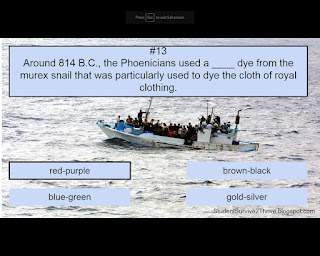 |
| The correct answer is red-purple. |
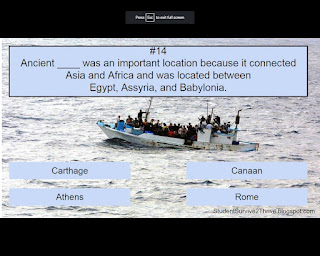 |
Ancient ____ was an important location because it connected Asia and Africa
and was located between Egypt, Assyria, and Babylonia.
Answer choices include: Carnage, Canaan, Athens, Rome |
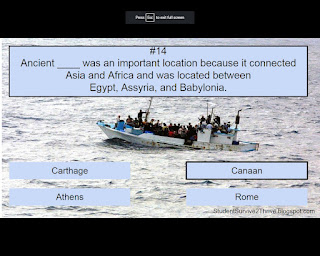 |
| The correct answer is Canaan. |
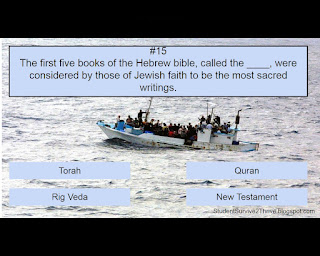 |
The first five books of the Hebrew bible, called the ____, were considered by
those of Jewish faith to be the most sacred writings.
Answer choices include: Torah, Quran, Rig Veda, New Testament |
 |
| The correct answer is Torah. |
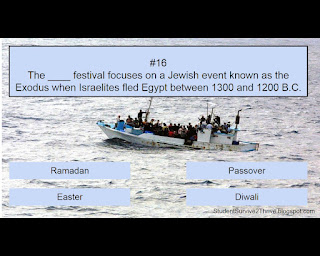 |
The ____ festival focuses on a Jewish event known as the Exodus
when Israelites fled Egypt between 1300 and 1200 B.C.
Answer choices include:
Answer choices include: Ramadan, Passover, Easter, Diwali |
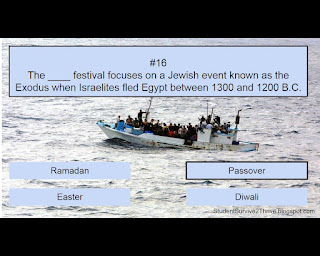 |
| The correct answer is Passover. |
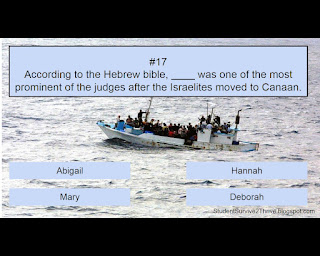 |
According to the Hebrew bible, ____ was one of the
most prominent of the judges after the Israelites moved to Canaan.
Answer choices include: Abigail, Hannah, Mary, Deborah |
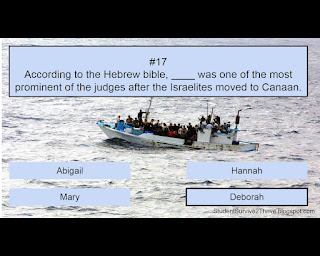 |
| The correct answer is Deborah. |
 |
_____ emphasizes right conduct and the worship of one God.
Answer choices include: Jatakas, Ethical Monotheism, Polytheism, Moksha |
 |
| The correct answer is ethical monotheism. |
 |
From approximately 1020 B.C. to 922 B.C., Israelites united under three kings.
Which of the following was NOT one of those kings?
Answer choices include: Jesus, Saul, David, Solomon |
 |
| The correct answer is Jesus. |
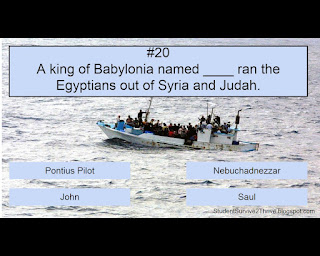 |
A king of Babylonia named ____ ran the Egyptians out of Syria and Judah.
Answer choices include: Pontius Pilot, Nebuchadnezzar, John, Saul |
 |
| The correct answer is Nebuchadnezzar. |
 |
| Find more resources at StudentSurvive2Thrive.blogspot.com |












































No comments:
Post a Comment
Thanks for reading my article and sending your comment! Please note that I do not place links to other web sites on this blog.
Note: Only a member of this blog may post a comment.